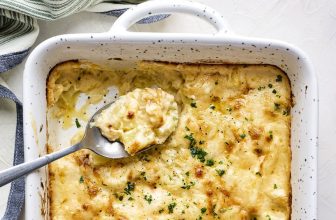
Today I’m going to show you how to make sausage gimbap. This kind of gimbap uses less rice than usual and is packed with plenty of ingredients with the sausage, so each bite is not only savory but also full of different textures all at once!
Gimbap is a very versatile food and Koreans have made many different kinds. Over the years, I’ve shared many different gimbap recipes with you, so take a look and try the ones that suit your taste!
For this recipe, I’m using sausages along with vegetables and eggs for the filling, but you can also use ham or Spam. When I lived in Korea, I sometimes made sausage gimbap by stir-frying the sausages with soy sauce and sugar. The special sausages I’m using today taste great on their own, so I simply slice and fry them without any seasoning.
Enjoy the recipe!
Ingredients
- 3 cups freshly cooked warm rice
- 1½ teaspoon Kosher salt
- About 1 tablespoon toasted sesame oil
- 4 eggs
- About 2 tablespoons vegetable oil
- 4 green onion tops (green part only)
- 1 English cucumber, cut into strips
- 4 pre-cut danmuji (yellow pickled radish) strips
- 2 medium carrots, cut into matchsticks (about 1 to 1½ cup)
- 2 sausages (about 6 ounces), rinsed, pat-dried, and cut into strips
- About 1 teaspoon toasted sesame seeds for garnish
Directions
Season the rice
- Put the warm rice into a wide, shallow bowl. Sprinkle ¼ teaspoon salt and 1 teaspoon sesame oil over the rice.
- Gently fold it over repeatedly with a rice scoop or a wooden spoon until evenly mixed.
- Let it cool until it’s no longer steaming. Set aside.
Prepare the Eggs
- Beat the eggs in a bowl with ½ teaspoon salt.
- Heat a 10–12 inch nonstick pan over medium heat and drizzle 2 teaspoons vegetable oil over top.
- Wipe away excess oil with a paper towel so the surface is just lightly coated.
- Pour the eggs into the pan and tilt it to spread the eggs evenly.

- After 4 to 5 minutes, when the bottom is set, flip the egg over.
- Turn off the heat and let it the other side finish cooking in the hot pan for about 5 minutes. Slowly so it stays yellow and doesn’t turn brown.
- Cut into ⅓-inch wide strips and place on a large platter.


Prepare the Vegetables & Sausage
Green onion:
Place on the platter next to the egg strips.
Danmuji:
Pat dry with a paper towel. If whole, slice into long strips. Place on the platter.


Cucumber:
- Cut lengthwise into quarters, then again into eighths. Remove the soft inner seeds.
- Sprinkle with ½ teaspoon salt, mix, and let sit for 10 minutes.


- Pat dry, then sauté in 1 teaspoon vegetable oil over medium-high heat for about 20 seconds until just bright green but still crisp. Transfer to the platter.


Carrots:
- Sprinkle with ¼ teaspoon salt.
- Mix and let sit for 5–10 minutes.
- Pat dry, then sauté in 1 teaspoon vegetable oil for about 1 minute. Transfer to the platter.


Sausage:


- Heat 1 teaspoon vegetable oil in the pan over medium-high heat.
- Cook sausage strips until light brown, stirring occasionally. Transfer them to the platter.




Roll the gimbap:
- Place a sheet of gim (dried seaweed) shiny-side down on a bamboo mat.
- Spread about ¾ cup rice evenly over it, leaving 2 inches uncovered at the top edge.


- Place carrot, cucumber, danmuji, egg strips, green onion, and sausage in the center of the rice.
- Using both hands, roll the bamboo mat over the fillings until the bottom edge meets the top of the rice, centering the fillings.


- Press firmly as you continue rolling, pushing the mat forward so it doesn’t get caught inside the roll.


- Place the finished roll seam-side down. Repeat for 3 more rolls.
Finish & Serve
- Brush each roll with a little sesame oil and sprinkle with toasted sesame seeds.


- Slice into ¼ inch bite-size pieces with a sharp knife, wiping the blade with a damp cloth between cuts.


- Arrange on a plate and serve immediately, or pack into a lunchbox.







